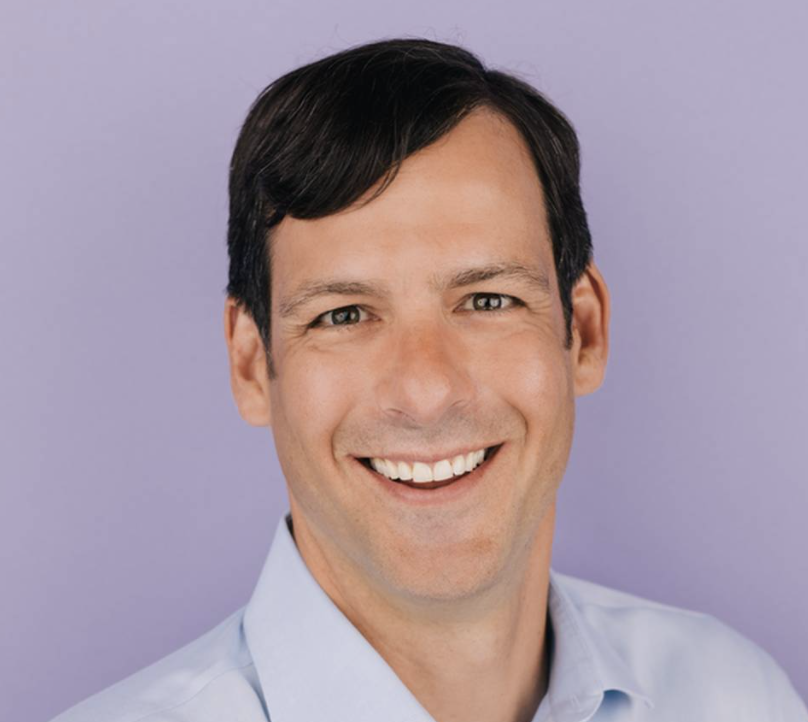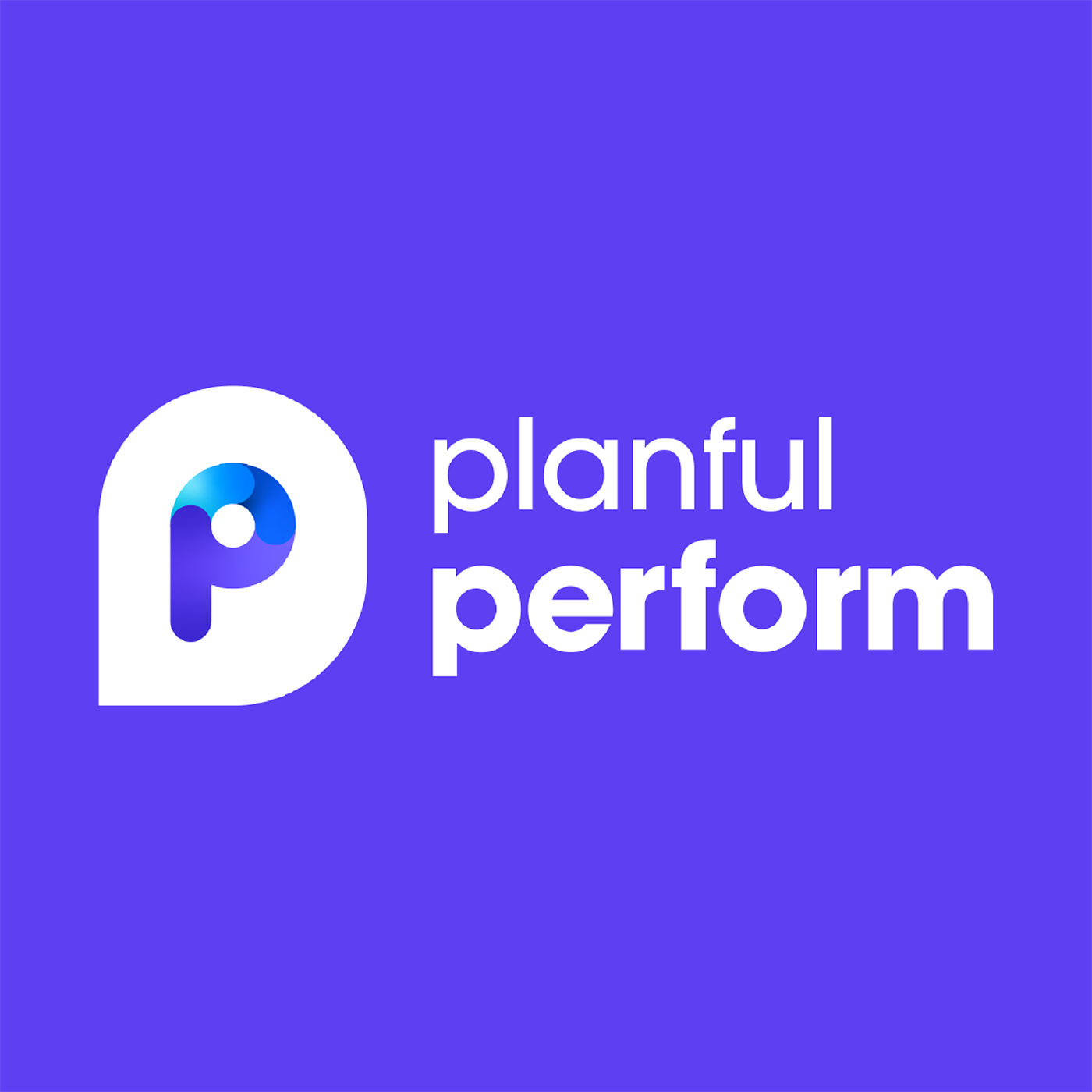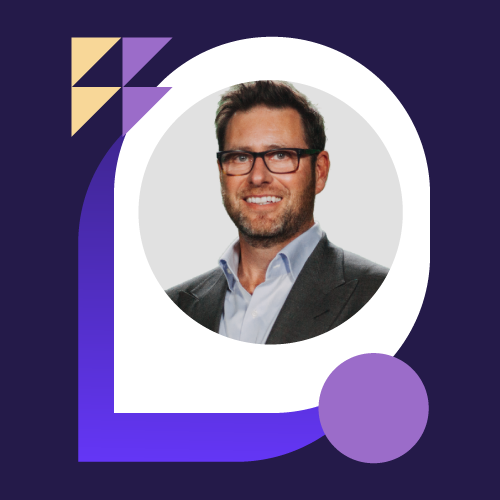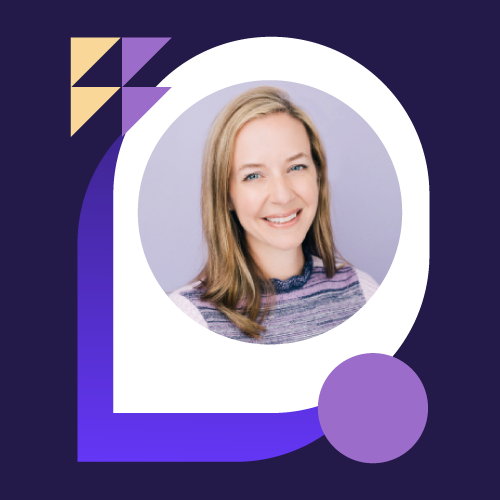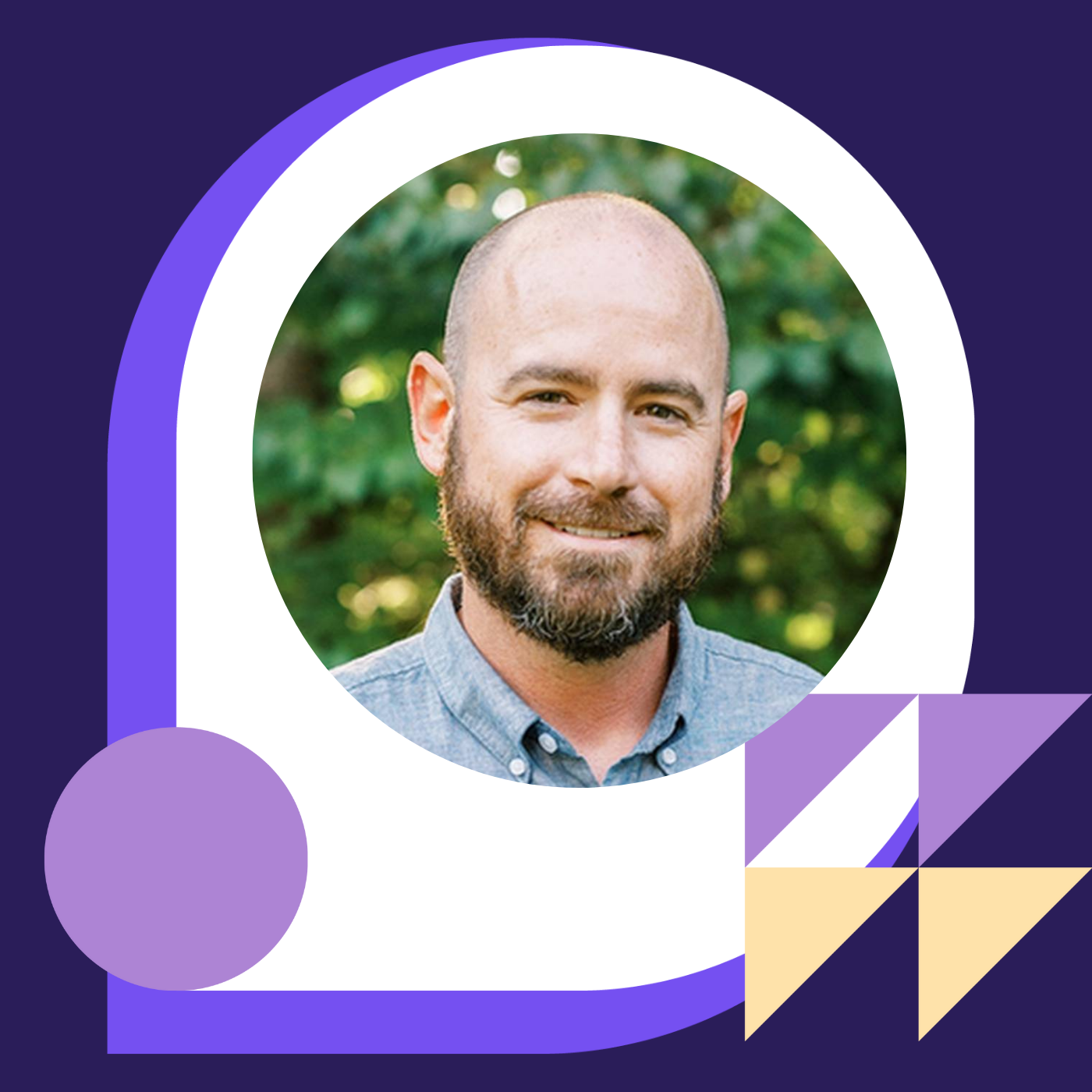Planful Innovation with Sanjay Vyas, Andrew Chatfield, Robb Nesmith & Justin Merritt
- 0.5
- 1
- 1.25
- 1.5
- 1.75
- 2
Robb Nesmith: Thank you, Rowan and Annette. Good morning, or perhaps evening to all. I hope you enjoyed Ray and Grant session. I know I did. And I don't know about you, but I just put Ray's new book at the top of my reading list. My name is Robb Nesmith, and I'm VP of product management at Planful. My background spans across and around the Planful ecosystem. As a system integration professional, I implemented ERP, reporting. And planning solutions. As a CPA and finance business partner, I've been a user of these same systems. I've also driven customer success teams for similar solutions and in the AI and machine learning space. Most recently, I ran the account management team here at Planful, a job I recently transitioned from. Finance and the systems that support it essentially run in my blood. I'm excited about the new role, the impact it can have, but I am even more excited, truly excited about what we're doing with the product. I have the pleasure to be the MC today. And we'll hear from experts on where we're taking the product, from its infrastructure foundation to the frontiers of technology with our AI- based solutions. Before we get into the details, let's just spend a brief minute talking about what's making our decision- making and guiding our investments. It's not complicated to win. For you to choose us and keep choosing us, we need to make you incredibly happy. We need to connect and collaborate with you so that you can do the same in your business to drive results. We're engaged with our customers like never before, and we believe we've charted a path that sets us apart from the roughly 7, 000 technology vendors that a CFO can choose from today. We're excited to share with you the next awesome experiences we're building that are unique to Planful for every corner of your business. So without further ado, take it away, Sanjay.
Sanjay: Thanks, Robb. Hello everyone. As CTO, I'm super excited to be talking to you all today about what we have been working on under the covers. To build, to scale, we need a solid foundation. As Robb said, our goals are not small, they're not incremental, so we made massive improvements on all these critical fronts. In the last one year, we've gotten better at handling more customers and bigger ones. And now, we are systemically better at our critical processes and we've become more nimbler and faster. Let's talk about performance. We are obsessed with performance and we are probably spending more on performance and scale than anything else that we do. We made a lot of improvements over the last 12 to 18 months. I pulled out a couple of examples here to give you a flavor, to show some of the dramatic improvements a couple of our largest customers are experiencing. So, refresh close periods went from three hours down to 20 minutes. Data loads. We went down from an hour and a half to 20 minutes. General processing. We went from six minutes down to 60 seconds. Automated cube refresh, six minutes down to 40 seconds. If you're paying attention, we're not shooting for 10% to 20% improvements, we're shooting for an order of magnitude impact. Our goal is that hours should become minutes, and minutes should become seconds. A lot of these learnings that we've had from solving specific customer Problems with customers have been refined and expanded, and we're now starting to productize those improvements. Let's look at Dynamic Planning. We have always excelled with large customers. Among our customers is the largest user of NetSuite. They tried implementing with a competitor of ours and failed, and today they're successful and growing on our platform. So, scaling is something that we do the best. So last year, our largest customer in Dynamic Planning was less than 100 gigabytes. And this year, it's four times that size. This gives you an idea of the kind of growth that we're experiencing on our platform. We've also invested heavily in expanding our data center capacity in January this year, so that we can continue to grow with our customers as they grow and bring in more data. Let's talk about automated testing. Our product is complex and it's hard for humans to find all the potential problems caused by making some part of the product better. There's a combination of data and using actions is just not humanly possible. So we have put the robots to work and given them more than 150, 000 tests to check every day, and we are adding more tests every day. To give you some perspective, a while ago, our automation suite was much smaller and used to run twice a quarter. Now, this whole expanded suite of 150, 000 tests runs every day and for each of our work streams. So what do these investments in automated testing mean for you? Well, it means that we can now confidently release our software and release it more often. We used to do four releases a year, once per quarter, and now we are moving to 12 monthly releases. And this means that our feature releases are smaller, which makes them less risky. We have also inserted a month of additional testing before we put them into our customer's sandbox. And from there, the customers now have an additional one month to try them out. So philosophically from firefighting, we're moving towards investment and fire prevention. Have you noticed a monthly release highlights? In fact, we are retooling our videos from quarterly to monthly. All of this effort is directed at the satisfaction of our customers and making sure that we can quickly respond to their feedback, because that's 12 times a year now that we can show better to our customers. I now want to talk about two huge engine upgrades. Our customers love Dynamic Planning and the flexibility it gives them, but they've always asked for a reduction in wait times. Well, the first big item which is coming in Q4 is a big improvement to model aggregation performance. To give you some context, when you enter data into a model, there's a calculation pipeline to execute the formulas and aggregate the roll- ups. Generally, it's the aggregation step that takes the most time. It varies from model to model. It also depends on how the model is designed, but generally that's true. And we wanted to cut aggregation time the most, not by a little bit, at least by half. And slashing it by half is huge. And we've been testing this out with some of our customer models, and for some models, especially bigger ones, we're seeing even better results than half. So now your specific mileage may vary, but if you'd like to get some early indication in advance of the release in Q4, we'd be happy to include you in our testing. Again, this is an ongoing program of performance improvement, and by the time this is generally available, we'll be onto the next one. Okay. The next big item that I want to talk about applies to the structured planning part of the product. So, I want to share with you Ivy, our new data fabric. It's the culmination of almost three years of R& D, dozens of people, and tens of thousands of hours of work. It's the most significant improvement in structure planning in over a decade, modernizing the engine that runs under the structure planning hood. Some of you have already started to experience some of the performance improvements of Ivy, but it's not just an incredible performance boost. It comes with a bunch of features as well. In fact, once you're on the Ivy engine, you'll be able to access features we just couldn't build before. So what you'll see with Ivy is a roadmap of features of its own, but out of the box, we'll be launching it with automatic cube processing. And around then, or shortly thereafter, we'll be bringing reporting currency conversions out of consolidation, and that'll make it not only more convenient, but also faster. Ivy comes with 150, 000 automated tests that I talked about, because we want to ensure not only that it works right now, it stays working as we continue working on it. We are being very, very cautious and deliberate about how we roll it out, because there are differences, and we want to make sure we document these, educate our customers about these as they adopt this new engine. So, as I mentioned, that already customers including some of you who have parts of Ivy working for you already, but it will be generally available by the end of the year. And now, back to you, Robb, let's hear more from the team about what's coming next.
Robb Nesmith: Thank you, Sanjay. Performance is the bedrock of a great user experience. No one wants to wait for the system to finish running. It also helps compress cycle times. And as you know, most importantly for decision- making, timely data is relevant data. This is important to us because it's important to you. These foundational investments also support the explosive growth we are seeing across the platform. For example, just in the last quarter we had over 2 million reports run on the product. And we had those reports run with a 99. 9999% success rate. When you need actual insights from your data, we deliver at scale. Finally, this reset of the foundation enables us to build more at a higher velocity. Let's see what we've been doing with this velocity. I like to introduce our CPO, Andrew Chatfield into the mix to cover some of the unique and powerful customer experiences we're creating. Andrew, take it away.
Andrew Chatfield: Thanks, Robb. I'm Andrew Chatfield, and I head up products here at Planful. I'd like to start by talking about user experience. You have tens of thousands of users logging into our platform each month, generating more than a quarter of million clicks, just inaudible. User interface really matters to us. Even small improvements in efficiency and reducing clicks really add up. Over the last two years in particular, we've made a lot of improvements and this work is just accelerating. We're pushing out UI improvements every month now, right across the products. You may have already noticed some small redesigns around the interface and little improvements in how things look here and there. But what I'm going to share with you today is how we think deeply about design and the substantial investments that we're making in its inexperience, not just in the product, but around the product. User experience starts with intuitiveness. If you see a screen that's new or just new to you, can you understand it without training? Can you find what you're looking for? In design, we call this findability. And can you find useful features that you're not looking for? In design, this is called discoverability. We're investing heavily in designing intuitive interfaces, not just for new screens, but we're going back into the oldest screens and redesigning them as well. We want to connect the screens together in natural ways that matched the way that you think and the way that you want to work, so you can get your job done faster. First, let me show you a simple example of how we redesign a screen. So here's a screen that helps an administrator set security options for data integration. Now, this is not a screen that anyone sees every day, but still it deserves to be intuitive. You'll notice that there's a lot of texts and that much of that text is repeated. You might find that your eyes struggles to land anywhere. You might find your eye shooting about randomly. It may be trying to find the differences between the different sentences, but actively avoiding reading any sentence. There's also a slightly unusual hierarchical relationship between the radio options. You went off and see two levels of radio options like this. And so, it might not be clear how the two levels interact. So, here's what we did to improve the intuitiveness of this screen. We analyzed the various terms used and checked for consistency with the references in other screens. We simplified the language, pulling out the key terms, and we tested those with our internal SMEs for accuracy and users for recognition. Next, we created a stronger relationship between the parent radio options and the second level options, which we presented here as checkboxes. This gives a better sense that these are optional modifiers. For information that we couldn't make obvious, we added some contextual help with a link through to the full help article. This lets the user learn without permanently cluttering the interface. Hopefully now, you'll find your eye is more likely to scan the available options and read the different labels and settle somewhere. Overall, this should feel like a much more approachable interface. Now, I still don't love the central alignment of the first part of the form, and the save button could be more obvious and placed in a better spot, but we'll come back to those things as part of a toolbar upgrade that we're rolling out incrementally across the products. The next tool in our user experience toolkit is onboarding or coach marks as they're sometimes called. We'll be using onboarding like this one here to announce new features or changes to features that you should know about. You'll be seeing this one in the product very soon. It's announcing our new navigation. The new nav's opt- in. With a fairly dramatic change like this, we want to give you time to adjust. And if you don't like it, you can switch back. The new nav collapses up into the top left corner, giving you the full width of the screen to work with. This extends the work we did recently to expand the vertical space by shrinking the top bar. Over time, we'll be maximizing the working space even more by progressively moving page headings and other buttons into that top bar. Clicking on the hamburger, reveals the same navigation items that you're familiar with now. Again, with big changes like this, we want to give you time to adjust and to avoid having to retrain. So we do want to make more changes here, for example, the icons and the text, but we'll make those changes incrementally. So try out the new nav and the coming weeks. We look forward to your feedback. I've shown you how we think deeply about intuitiveness for each screen we touch, and how we're using onboarding to highlight new features and new changes, and how we can add additional information using contextual help right in the page. But online help, the manual, if you like, should always be close at hand. And particularly for administrators and partners, it's critical to gain a deeper understanding of the platform. This is why we formed a dedicated content team earlier this year with the mission of greatly expanding and improving our help. very shortly, we'll be launching a whole new online help system. Not only does it look more modern, but it has a whole new set of features as well. We'll be creating direct links from the product into relevant articles like we always have, but it also features much improved search and browse experiences. Here in the browse experience, we can pull out key topics relevant to the type of user that you are, and the Planful features that you have enabled. To fit with our new monthly release process, you'll be able to see release notes for the past, current, and upcoming releases. We're also enhancing our release notes with videos and other materials to get you up to speed faster. The new help platform offers a step change in search capability. You'll be able to find whatever help you need in an instant. And there'll be a lot more defined as well. We'll be investing heavily beyond just help articles into quick reference guides, getting started lessons, how- tos, videos, and other advanced training materials. And naturally, we'll be asking you for your feedback on our content, so that we know where we should focus our improvement efforts. This exciting new system will launch with release notes soon, and then we'll be migrating our content over time. Also, this year, we formed a new product design team, with new staff and a renewed and expanded mission for user experience. Those investments will be more than doubled into next year, as we execute our vision to make plan for the best looking, most powerful, and easiest to use product for finance and accounting in the market. Our consistent vision for finance and accounting has been compressing cycle times, engaging every corner of the business, and making it easy to connect and collaborate. Particularly in the last 18 months, we've been talking to customers a lot about the different ways we could bring this vision to life. We had some hypothesis, we ran some experiments, and we got a ton of customer feedback. The challenge that emerged was how could we continue optimizing the experience for finance and accounting professionals while at the same time, making it easy for non- finance uses. We made a breakthrough in our thinking about this, one that creates the space for us to make a great experience for both finance and business users. Today, I'm really excited to share that experience with you. Canvas will be the new interface for non- finance uses to access Planful. An interface that reduces the friction involved in engaging your business users, in planning and other financial processes. We're prioritizing budget owners, cost center managers, and other users that you have regular contact with today. But eventually we want to engage all your staff in Planful, all staff contributing to and consuming financial information in some shape or form. To achieve this, our plan is to take all our expertise and user experience and focus it into a single goal, zero training. Zero training. The easier Canvas is to adopt, the more people you'll be able to roll it out to, and the faster you'll be able to plan, and the faster you'll be able to close. The more people that contribute to your planning, the more accurate it will be. The more people that can consume the output of your planning, the more valuable your plans will be. So if zero training is the mountain that we want to climb, how do we get started? Let me show you the first step we're taking in this direction. We know that some customers are exporting templates to Excel and emailing them to budget owners for say, focused harvesting. So here's a simple way that we can help bring this process online. Here, I can copy a link to a template, and email or Slack the link to a budget owner. The budget owner clicks the link and gets a very simple interface, just presenting the template with minimal first. The budget, I enter some figures, click save, and they're done. A simple example here assumes that the budget owner is already familiar with this template. At some simple onboarding, and this interface can be zero training. Templates in Planful are an incredibly powerful tool for finance and accounting professionals, but they can be a little intimidating for non- finance users. So what can we do about that? Well, there were some things that we can do in the template itself when we present it to the business user. For example, we can simplify the formatting, increasing the space around the figures and removing background colors and other visual clutter, like this. We can also provide collaboration tools at the cell level, so the budgeters can ask questions in context. And we can provide simple tools for finance to provide instructions and highlight sale ranges. The possibilities are endless and we're only just getting started. We've taken the very first step, and version one of Canvas will be coming out very shortly. We want you, our customers to drive where we go with Canvas. If you're willing to be involved, we'd love to hear from you. Artificial intelligence is a subject shrouded in mystery for most of us, right? There are a number of AI products out there that seem to promise the world. And you might be suspicious about whether these off the shelf products can work for you. The truth is, finance is special. Over the years, we've seen lots of very promising technologies fall down when applied to finance. And this is true for AI as well. When we started to build our first AI product last year, we came to understand these challenges. Off the shelf algorithms need a lot of data to produce accurate results, and they don't understand finance, account hierarchies, credits and debits, currencies. They don't have any comprehension of these concepts. And they need a lot of configuration, tuning for every customer, which means you couldn't just turn them on and get to work. So we went in a different direction. We brought in AI expertise and we built our own AI technology. Planful Predict is unique offering in our space. The algorithms that we've developed are uniquely designed for FP& A, and build on our more than two decades of FP& A and accounting experience. Predict lives down in the engine room of our platform, down the world the financial intelligencies, in where the money and the formulae and the entities and the unreconciled accounts and the hidden errors and the unknowns of the reports are. Predict understands actuals. It understands seasonality and dimensions and what a rolling forecast is, and what your rolling forecast is. Because predict understands you, it can help you. And it can help you where you are in the product, where your working. You'll see the Predict icon in more and more places in the product over time. Wherever you see it, it's there ready to do something amazing. You might use Predict to find the typo in a million cells of budget data that you pretty sure it wasn't there, and you definitely didn't have the time to go searching for yourself. Or you might want to Predict to forecast thousands of account lines in seconds, saving you hours of manual work. And maybe you want Predict to save all your cost center managers those same hours of work. Maybe that saves your organization hundreds, or even thousands of hours each year. Our first Predict product, Signals, is out now. We'll be testing our second product, Projections, with early access customers in Q1 next year. I'll hand over now to Justin to give you a live demonstration of the latest release of Signals and show you what we'll be delivering in the first version of projections. Over to you, Justin.
Justin: Thanks Andrew. Now let's take a look at what we have available today in Predict Signals. We'll take a look at how we can use the AI technology that's already built into the Planful product to better enhance the way we look at and understand our data, and surface that might be potential issues.
JUSTIN: So the common challenge we run into in a business is that we roll up the plans. We have thousands of data points from our reforecast, from our budget, and it's really tricky sometimes to understand where my issues lie in those numbers. Is there a mistake? Is there a fat finger? There are certain ones that are pretty easy to understand, like here in my latest forecast in the orange, I can see that something's causing our expenses to be way higher than our original plan. Through tools like dashboarding, I can easily click in, I can even right click and drill through and see all the individual details about the submission. From these details, I can get to and see the numbers and see somebody put in$ 2. 5 million, for example. That one's easy to find, but what about all these other numbers? How do we know if those are accurate? How do we know if there's a potential mistake there? Maybe we need to look at doing some cost cutting. Maybe we have a special initiative that came up and we need to find some additional dollars so that we can go do it and still stick in the expense levels of our original plan. Those are the things that become really, really difficult because of the literally millions of data points that exists across a plan for a business. What we can do with Predict Signals is we can surface that information directly, without having to go in and without having to search through every single piece of information. I think about when I was sitting in the head of FP& A chair, and I would have to actually print out all the different submissions, go through line by line and try to find these different pieces of information. What we can do with Signals is actually surface that detail as that kind of at the top of the pile or a head reviewer, I can see where potential issues might exist in my data, can also have risk categorization. So high, medium, low based on materiality to my business, both percentage and dollar amounts. We can see how signals lay out over time. We can also start to slice and dice our signals based on the dimensionality of our data. And underneath all of this is the specific information about what people submitted and where those signals lie. Here in travel and airfare, I can see that I have a high risk signal for 40,000. I can easily double click on that and start to see right away where that information is. What's great about this is if I want somebody to take action. I'm looking at this, this is for my sales department. Maybe I want that sales department owner to take action on the number. I can come in. I can comment, Ask Ali to take action. I can even assign it to him as a task and that'll show up in his actual task list. He'll get email notification and it'll link directly back to this report and he'll know exactly what he needs to do and why I'm asking him to do it. The other thing that's great about this is besides being able to drive that interaction right here in the data from, I'll say a top level user perspective, all of this is also available for anyone who has access into the product. So when you think about all your departmental users, people who are trying to understand, maybe they have multiple contributors within their department, they can actually come in and use these same tools to review those submissions before they send them over to finance for review and approval. And additionally, Signals is now available directly in any reports that you have. So if you want to take a look at your OPEX and you want to evaluate that for your specific department or for any place in the business, we can now simply click, show signals. And in any report in the application, it'll automatically highlight with that risk categorization exactly what might be wrong in the data. You of course have all the same drilling and exploration tools that you're used to, but now you can also take any signal and look at the context right here from within the report. So again, just a couple of great things that we've made additionally with Signals, and I think you're going to love using this because it's going to save so much time when it comes to that review process, and now you have that assistant to help you find all those potential issues in the data. Now, let's take a look at some of the enhancements that are coming soon to Signals because the work isn't done yet.
Justin: So that's what's available today in Predict Signals, but the work doesn't stop there. We continue to listen to feedback from our customers and from those using the product, and we understand that people want an easier way to consume the signals information. As you can see here, we've added a new dashboard view to the product. Across the top of the screen, we can see our risks categories in high, medium, and low, according to how much it might impact your business. Those materialities are set by each of our individual customers, so it's specific to you. When you initially come into this view, all the signals that have been produced are going to be automatically sorted according to that risk level. From here, we can start to sort and filter on our information. Of course, like you'd expect in any grid view, all the columns are sortable and filterable, but also, because your data is stored dimensionally, you can use that dimensionality to slice and dice through the information. And of course, as you look to continue this investigation, you can view all of the signals context. The great thing about this dashboard view is it's also very specific to the person who's actually looking at it. So when you think about a department owner coming in and viewing this, they're not going to see all the signals across the entire business, they'll only see those signals that are specific to their area of the business, making this extremely useful, not just for the office of finance as you're reviewing each piece of information, each submission that's coming in, but also for those department owners as they're looking at their plans while they're creating them. Next, let's take a look at the next area we're going to with Planful Predict, Projections. What we're doing is bringing AI- enhanced forecasting directly into the Planful product. With AI- enhanced forecasting, what we're doing is trying to make the application smarter and make it easier to use for folks, so that it's less daunting and you spend less time on the non- value- added activity of planning for the normal parts of your business. This will free up time for you to actually plan for those things that are complicated, those things that are hard, things like, what's the next strategic initiative you want to go after, is there an acquisition you want to do, or maybe you have to work on something very specific, like hosting a live customer event. And we want you to be able to spend that time to plan for those specific details to make those things more meaningful and more accurate. Let's take a look at what Projections looks like.
JUSTIN: And put ourselves in the mindset of a department owner. So somebody who's outside of finance and accounting, somebody who has responsibility for what the organization spends, but they think about it in a different way. They look at it in the execution of running their department. How do they fit into the overall goals and objectives of the organization? And probably one of the biggest things that gives them anxiety or makes them uncomfortable is that exercise where finance and accounting sends them something like this, whether it's through Planful or maybe you're not using Planful, so it's a big Excel spreadsheet and they have all these blank cells, and it's all these numbers. And it's just so much outside of their wheelhouse that it can be overwhelming, right? You think about even in a simple department with just a few lines times 12 months, I mean, literally hundreds of data points that we're asking folks to fill out. And oftentimes in the original budget, a lot of times it's blank. We want to do zero- based budgeting. So it's completely blank. A lot of times, even in the forecast, some people do a zero- based forecast versus rolling that forecast forward. And what this means is that we're literally providing hundreds of empty cells and we're asking people to put those numbers into those empty white spaces. The challenge with that is they end up spending a lot of time inputting numbers that really are just pretty normal. They're part of the normal business. They are things that we don't need to spend a lot of time in. A lot of thought doesn't need to go into those. But what happens is because that consumes so much time, then it really minimizes the time that we're spending on other things that are important, the things that are part of strategic initiatives, the things that we actually can control, the things that are part of projects we wouldn't go do, building out those detailed plans of what we're going to do and how we're going to do it and what it's going to take to get it done. And so, one of the things we want to be able to solve for with Projections is removing that friction. We want to continue to have the buy- in of the people who actually own the numbers. They're making those day- to- day decisions, they own these numbers, they can control them, but we want to make it easier for them to fill out those numbers that are just part of the normal everyday business. And that's what Predict Projections brings directly into the Planful product. So let's take a look here. Let's look at this travel line. Let's say, you know what? I'm pretty good. I just want projections to fill out the budget for travel. I can literally just click on it, go to Projection, and just fill that selected line. I now have the confidence that these numbers are coming from Projections. Purpose- built AI technology that's going to tell me and fill out an appropriate value for that account based on history and based on AI analysis of prior data. When we look at this further, we may not want to do that on every line kind of line by line. So what we've done is we've created a way to actually do this for all of our accounts. So, created an entire overlay tool to work through the projections. Let me show that to you. Let's go in and do an advanced fill. Through the advanced fill, I now get a perspective account by account so that it's not overwhelming of some of the details. We can see that January and February are locked in this case, because those are actuals. We can see what the current projection looks like. We can see the current value we have in the projection and the adjusted projection. For those who plan for multiple years at a time, you can easily toggle between those different years. You can toggle between the different lines that are available for you in your template. So all your input lines, you can do right here from this screen, without going back and forth to the template view, to the projection view. We also have the ability to adjust the projection, either at a monthly level basis, or we can do it inaudible across all the different levels. We can put in a percent or a value and adjust those, and then all we have to do is click update template, and that will then update the numbers that we see in the template. One of the things that I think is really important here is we want to be able to also provide additional context. So all of those historical details, the output of the algorithmic analysis and the numbers, we can actually see all of that information presented here if we need to. So as we're looking at an account, we're trying to make smart decisions about how we plan for it. We can actually see historical context. We can easily toggle on and off different segments of history, even different prior scenarios. And we can start to get a real feel and understanding for why the projection is where it's at and how that compares to prior things. This also gives me a lot more context around, like with travel. Is there a trade show that only happens once every three years and maybe I forgot about it? Well, now that information is right here at my fingertips, all within this singular interface, which should then again, just make the overall process much faster, much more frictionless, and hopefully, less anxiety- inducing for those department owners.
Justin: Wow. I hope you're as excited as I am about Planful Predict Projections and the work that we're continuing to do with Signals. At the beginning, we experimented with Predict Signals. We followed our competitors. We took some generic AI algorithms off the shelf. We tried to apply them to finance and accounting data. And what we found is many of you who've tried this, it just doesn't work. And so, that's why as Andrew walked you through, we decided to bring that in- house. We've developed our own approach that works extremely well for the information that you all work with every single day. What that means is that we're able to elevate financial intelligence across all of our customer's organizations, whether it's through signals and automatically looking through the data, through those millions of data points that you've brought in through your planning process or your reforecasting process and helping to identify where potential issues might lie in the information, where might there be a wrong formula or a fat- fingered number, some plug that didn't get removed. With Projections helping to remove the friction of the process for department owners to actually put their data in, take all of those data points that come from the normal part of the business, make that extremely easy for them to get in, and then allow them the time to focus on the things that actually matter, the things that actually drive the business forward and the operations of their departments. Overall, when you think about this, it's intelligence sparked by Planful. It's the ability to have a planning system that not only provides you the ability to plan and document, but also gives you true intelligence that you can work with. And what's really exciting about that is the work has just begun. I'm going to turn it back to Robb now to talk about some of the future of where we're taking these things with Planful.
Robb Nesmith: Wow, exciting stuff. While I am amped about all the improvements we've seen today, I personally believe our investments in Predict is what's going to make us special. Our goal is nothing short of redefining how finance delivers value through the power of AI. Lots more to come here and we believe lots more for you to work with too. We've covered a lot of ground, but we also want you to appreciate some of the fundamental changes we've had to make to our prioritization and delivery motion to be successful. You, the customer are going to be at the epicenter of everything we do. Direct customer engagement will be our bedrock for feedback. Our product teams, unfortunately can't talk to every customer every month. So, to direct what we build, we are ensuring your voices are heard by leveraging a broad, cross- functional team across the customer facing functions at Planful. We call these teams workstream advisory boards or affectionately, WABs. Everything we decide to do in the product is vetted through these WABs to help ensure we are building an amazing experience for you. We have also changed how we are taking new ideas to market. As opposed to trying to build a fully featured solution out of the gate, we're going to listen as we increment towards a mature product. We are engaging with you at every step of the process. Your feedback drives what we will build and win. And we are learning as we go. For instance, with our Predict solution, we added Signals to reports and signal calculations at the roll- up level and hierarchies based on customer feedback. Thanks for all this feedback and for the feedback that you're going to give us as we move forward. Given this approach, we only want to talk to what we're highly confident of delivering in the short- term. In the longer term, things are going to evolve based on all that feedback that we're going to collect from you. The features and functionality you've seen today will be available by the end of the year or within the first half of next year. Unfortunately, we don't have time to demo everything on the roadmap. During this presentation, we have reviewed most of the features included in the workstreams at the top of the slide. We also are making significant improvements to our workforce planning solution, our close and consolidation products, and our reporting solutions. These are just a highlight. There are many more improvements under the covers. So, I hope I haven't overwhelmed you, we haven't overwhelmed you with how much is going on. I want you to feel like we have a lot of threads going at once, but we are being careful and deliberate with each one of these threads. That's where we're connecting and collaborating with you whenever it makes sense to. I feel like we're going somewhere really exciting. Thanks so much for your time today. From all of us at Planful, thanks for participating and taking this journey with us. Together we will innovate, accelerate so that we can grow to impact every portion of your business. Thank you. Enjoy the rest of Perform. Back to you, Rowan and Annette.
DESCRIPTION
Join Planful’s CTO Sanjay Vyas and CPO Andrew Chatfield, along with Planful’s product leaders, as they reveal the new innovations that help Accounting, FP&A, and Finance teams take action and drive business priorities. You’ll get the latest on the increasingly robust and scalable Cloud Financial Platform, usability enhancements, and applications of Artificial Intelligence available now and coming soon!



